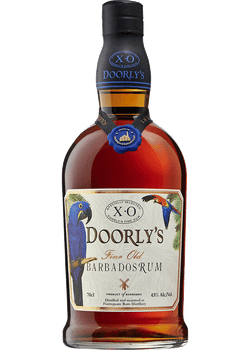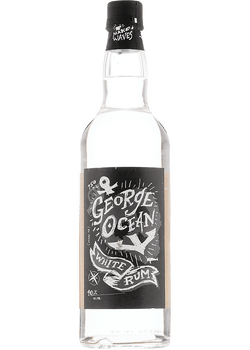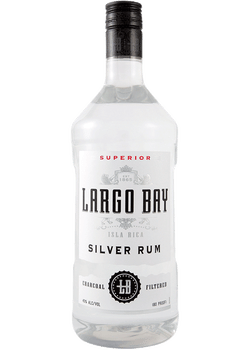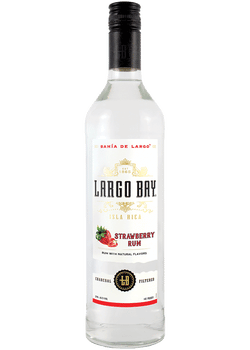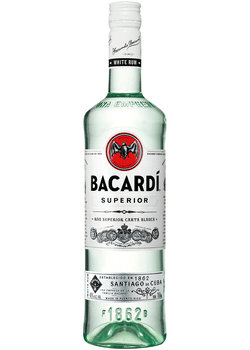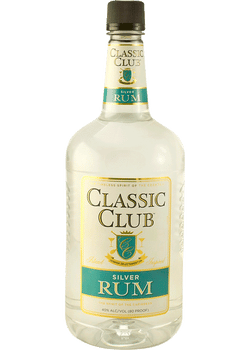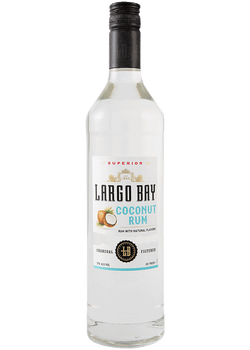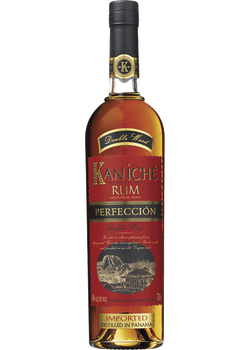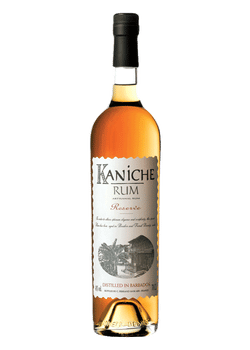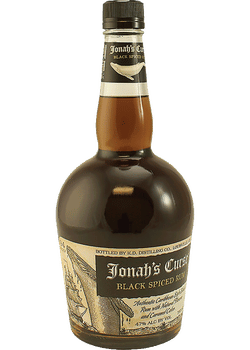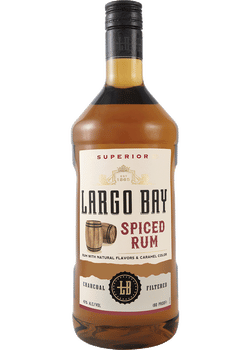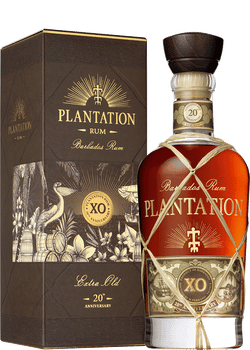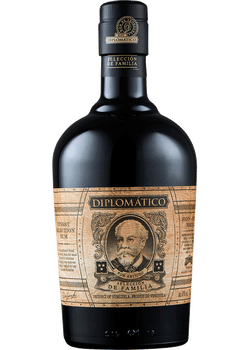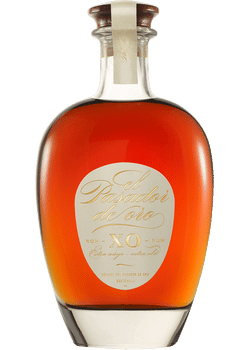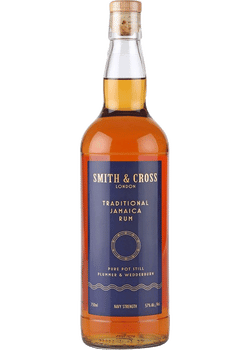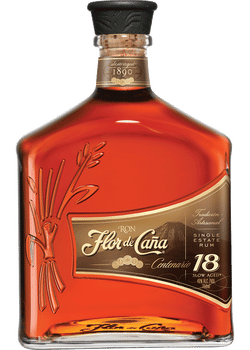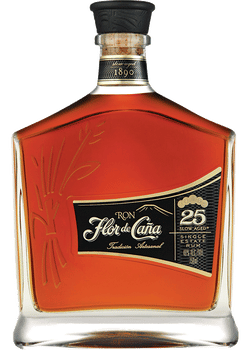What is Rum?
So you’re here to learn more about Rum, one of the oldest distilled spirits in the world. Unlike Scotch, this spirit’s origin is unclear. Some say that the spirit originated in the West Indies and was referred to as “rumbullion” in 1650. By the late 1660s, the name was shortened to “Rum.” As a popular spirit amongst British sailors, it was regularly rationed to each sailor from the 1700s all the way through 1970!
How do you make Rum?
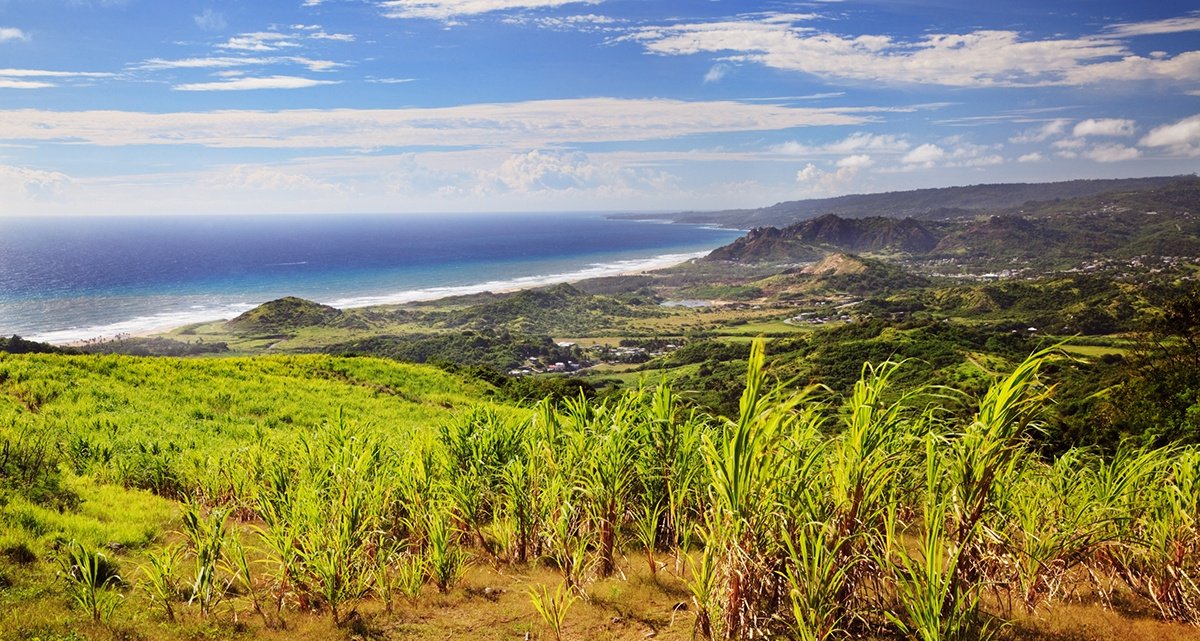
In case you didn’t know, sugar cane plays a huge role in the creation of Rum. It’s what distinguishes it from any other spirit. Early Caribbean Rums mixed molasses, leftover “skimmings” from boiling sugar cane, and “dunder” (sediment in the still) to create a juice-type substance. That was then fermented and distilled using pot stills to produce the spirit.
Fun fact: Although pot stills are used to create traditional Rums, most productions now use continuous column stills.
Like many spirits, Rum is aged in wood casks. Depending on the type of wood used, the spirit will take on color and taste influences from the cask. Since Whiskey producers cannot reuse their casks, Rum distillers will use the old barrels, potentially adding an underlying whiskey flavor to the spirit.
One thing to keep in mind is how the climate impacts the aging process. Since many regions that create this delicious spirit are located in more tropical climates, the aging period will be much shorter than cooler areas. For example, dark Rum made in the Caribbean is typically aged between 3-5 years, while one from North America might need around 10 years to reach that dark, oaky flavor profile.
In the end, most Rum is bottled at 40% ABV (80 proof); however, there are some exceptions here and there. Types with higher ABVs than normal are usually the ones used to light on fire!
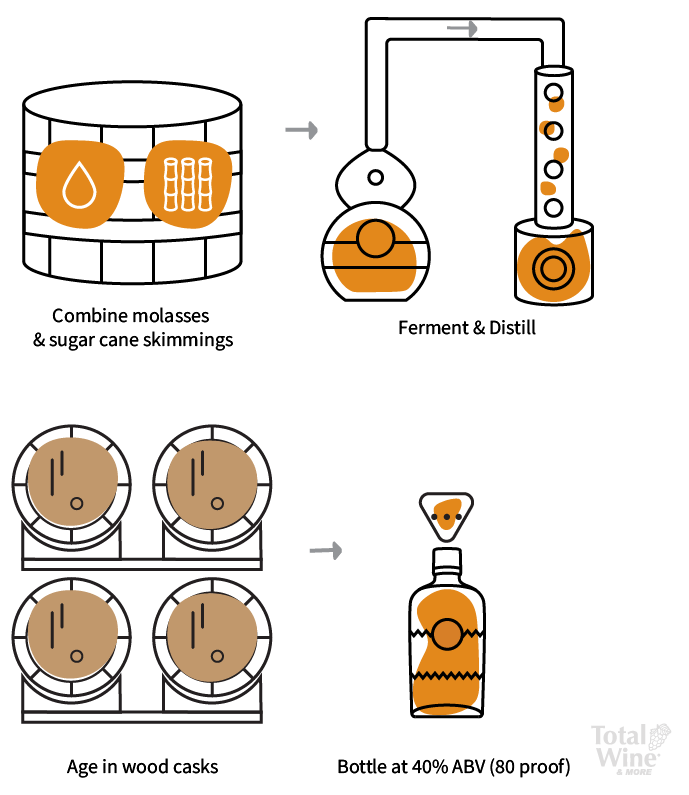
Location Matters
Styles will vary greatly according to where they are made. Central American producers, for example, generally create light-bodied styles, carefully aged for a light, fruity, and floral taste. Medium-bodied blends from Barbados have additional character. Trinidad makes lighter-styles and is known for uniquely spicy blends.
What does Rum taste like?
Unlike many other spirits, Rum does not have one set of rules when being made. It will most likely taste different from country to country, region to region. Each place will have different laws and traditions used for its production. The one thing you can rely on for taste is the sweet stuff! The level of sweetness will vary, but for the most part, they have a hint of sweet flavor. Along with that, the flavor will be balanced out with richness, drinkability, smokiness, etc.
Types of Rum
Out of all the types of Rum produced in the world, any bottle typically lands in one of these categories:
White Rum
AKA Silver or Clear, White Rum is clear and generally has a sweet flavor. Although these can be aged, it is typically for a shorter time than all other types or not at all. If they are aged, the Rum will usually be filtered afterwards to remove any color in order to remain clear.
Gold Rum
AKA Amber or Pale, Gold Rum tends to sit right in the middle of White and Dark in regards to strength. Usually aged in [white] oak barrels, Gold Rum will take on some particles from the barrels, giving it that gold color, although some might use coloring instead of aging.
Dark Rum
![]()
The darker the Rum, the longer it has been aged. Darks are aged in charred barrels, and done so longer than White or Gold. This style has more flavor with hints of spice, molasses, and caramel. Yum!
Spiced Rum
![]()
Spiced Rum, AKA Flavored, has spices added before the bottling process. The producer then adds in fruits, spices, or other ingredients to help develop the flavor profile of the final product.
Rhum Agricole
![]()
Rhum Agricole is made from sugar cane juice, but is produced in single column stills. Since the distillation process is a little different, this French-inflected spirit yields low-alcohol, light, and fruity flavor, often bottled unaged. The flavor profile will be unique, but could look like White, Gold, and even Dark Rum.
Demerara Rum
Demerara Rum comes from Guyana and incorporates sugar cane juice instead of molasses. The sugar cane comes from along the Demerara River, hence the name of the full-bodied, rich spirit.
Fun Fact: All Demerara Rum is distilled in Guyana, South America, regardless of where it may be aged and bottled.
Naval Strength & Overproofed
With a deep history behind how these two types came about, their ABV is the main factor to keep in mind. Naval Strength is bottled at 50-59% ABV and Overproofed is any Rum over 60%.
What is Cachaça?
Unique to Brazil, Cachaça (kah-SHA-sah) is a Rum-like spirit distilled from fermented sugar cane juice. It could be aged or unaged and might even have sugar added. When muddled with lime juice and sugar, Cachaça makes the quintessential Brazilian cocktail, the Caipirinha.
How to drink Rum
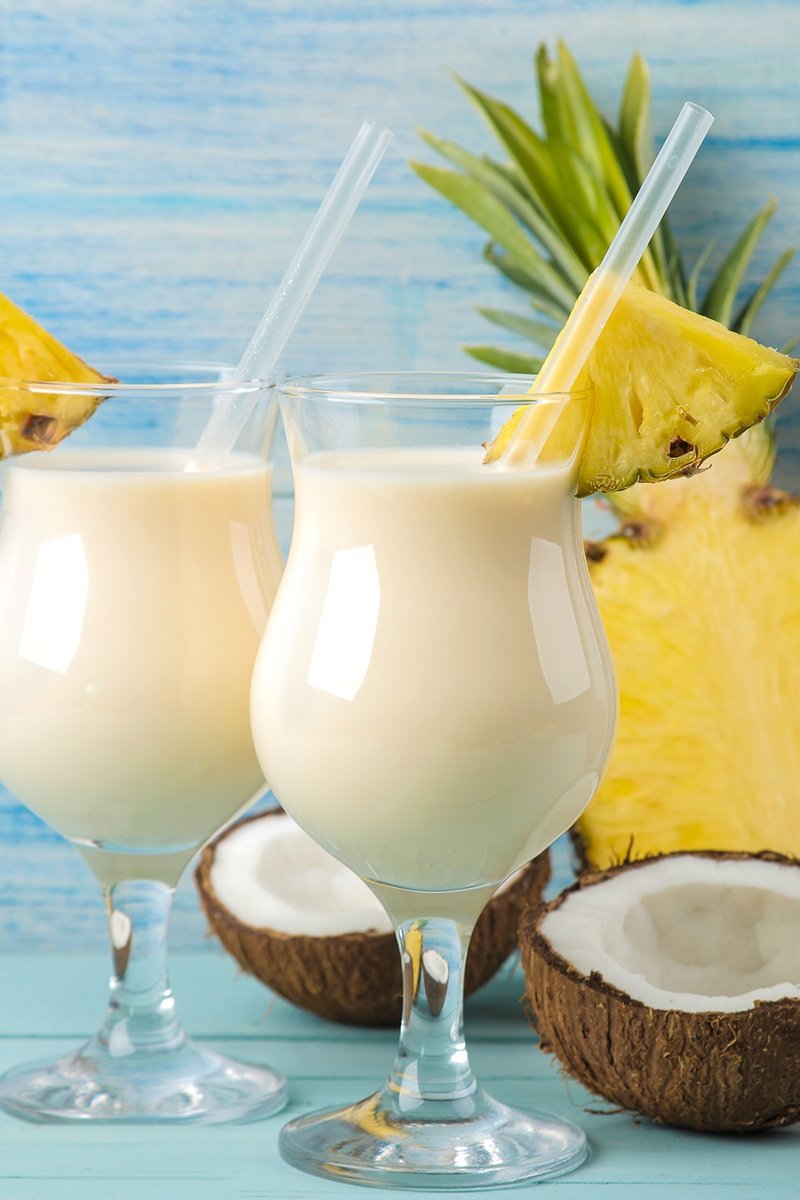
Rum is one of those spirits that was popularized through cocktails! Check out our favorite cocktails, including:
Overall, Rum is a sweet, customizable spirit. Share this article and see if your friends agree!

